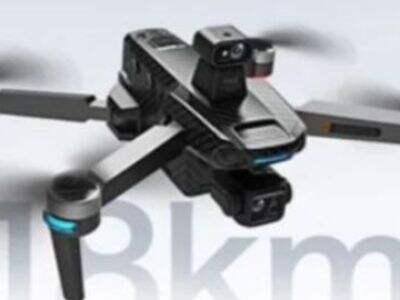Understanding the different categories of flying robots available will help you choose one that will fit your project. Typically, UAVs come in two formats: multi-rotor UAVs and fixed-wing UAVs. There are pros and cons to each type. Knowing these differences will help select which is right for what you need.
So let us discuss the understanding of Multi-Rotor and Fixed-Wing UAVs.
Multi-rotor UAVs use multiple rotors, typically four or more, to allow them to remain airborne. They’re good at hovering in one place and moving about in tight places. But they don’t fly for as long or as far as fixed-wing UAVs.
Headless drone : Fixed-wing UAVs resemble airplanes. They carry wings which provide lift, enabling them to fly longer distances than multirotor UAVs. They are more energy efficient and can reach larger areas when they fly.
Considerations When Choosing:
Consider what your project requires when choosing between multi-rotor and fixed-wing UAVs. If your wish in a flying robot is for something you need to be precise with, for short missions, then a multi-rotor UAV might be just the thing you need. But if the goal is a flying robot for long missions with a lot of ground to cover, something with a fixed wing might be the better choice.
Benefits of Multi-Rotor UAVs:
Multi-rotor UAVs are ideally used for applications where you need to hover such as aerial photography, surveillance, or search & rescue. They are capable of vertical takeoff and landing, which makes them usable in tight quarters. They are also generally less expensive and simpler to maintain than fixed-wing UAVs.
Fixed-Wing UAVs are Superior for Long-Distance Operations
large fixed wing uav have bigger wings, which means they go further and are more efficient. UAVs are capable of covering greater distances, and spend more time airborne than multi-rotor UAVs. This also makes them good for environmental inspection, farm surveys, and mapping.
Making the Right Choice:
Consider your unique needs when selecting between multi-rotor and fixed wing lidar drone. Think about how far you might have to travel, how extensive your missions will be, and where you’ll be flying. This will allow you to make an informed decision that aligns with your needs and system to help achieve your project objectives.
All in all, multi-rotor and fixed-wing UAVs offer unique advantages and disadvantages. Formulating your needs through familiarity of these flying robots can ensure you select the right one for your project. So if you want a small flying robot with short, precise missions or a drone that can fly high over a larger area Adiyate UAVs out there.

